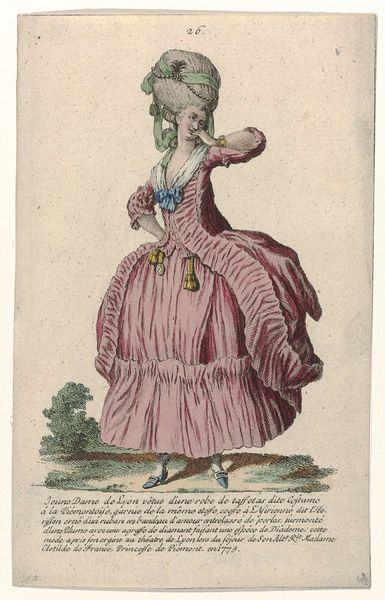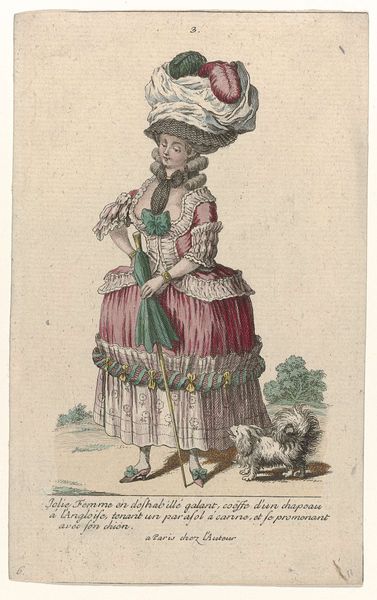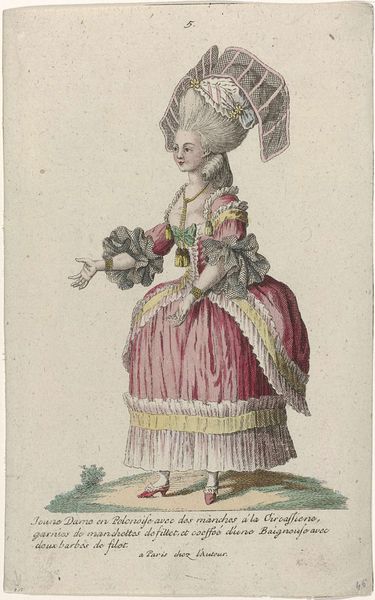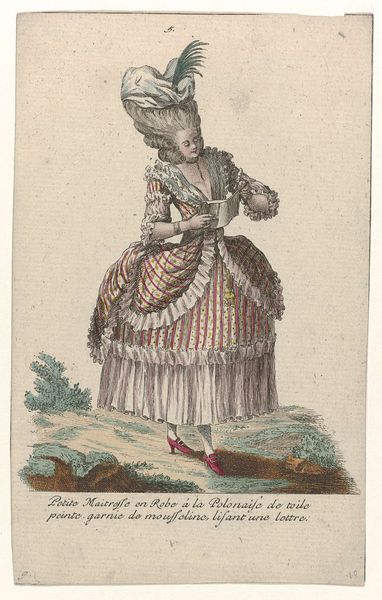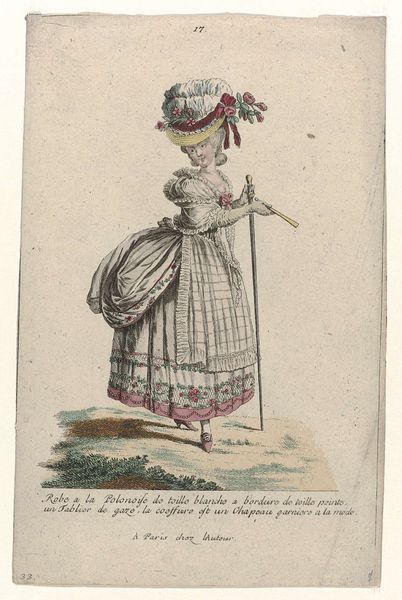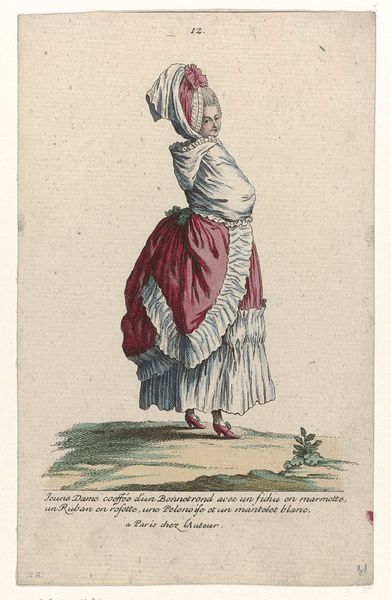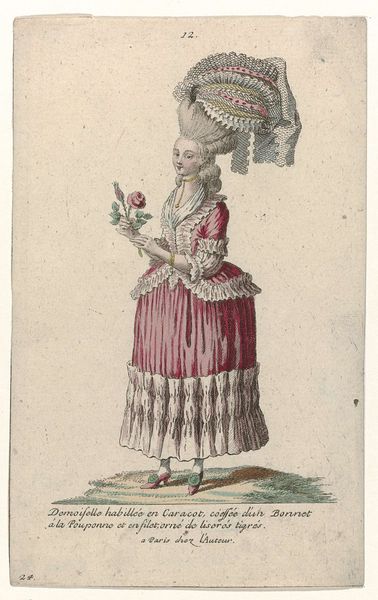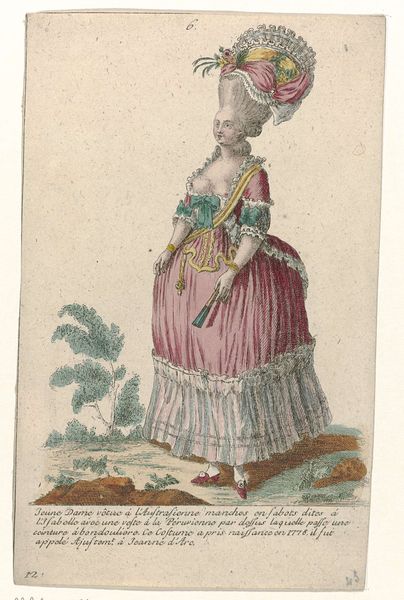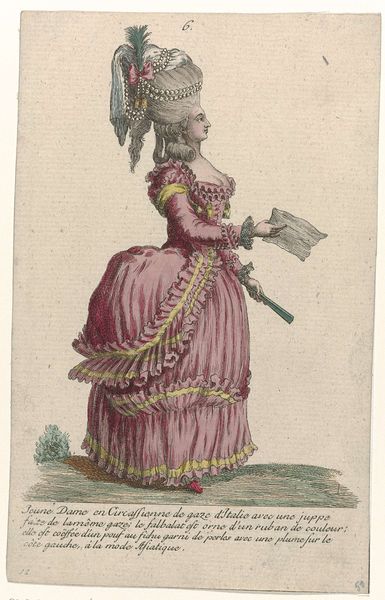
Gallerie des Modes et Costumes Français, 1785, nr. 17, nr. 34, Kopie naar Q 95 : Jeune Demoiselle en Polonoise d'indienn (...) c. 1785
0:00
0:00
Dimensions: height 177 mm, width 112 mm
Copyright: Rijks Museum: Open Domain
Curator: Here we have a print entitled "Gallerie des Modes et Costumes Français," dating to around 1785, by Pierre Gleich. It depicts a young woman in fashionable dress. Editor: Oh, she's exquisite, isn't she? There's such lightness, almost a delicate airiness about her and her rather ridiculously large hat! I wonder, what can you tell me about how these prints were made? Curator: It's an engraving, a process involving meticulous work with metal plates. The lines etched into the plate would be inked and then pressed onto paper. You see this especially in the depiction of the fabric, which emphasizes its qualities but also the intensive labour involved in its making. The attention given to details of textile and accessories speaks volumes. Editor: Right, and "modes et costumes" translates to fashions and costumes, making clear the print's primary focus and market. Look closely. Even the dog seems to echo her sense of refined gentility. The flowers topping her head perhaps act as emblems of the ephemeral nature of beauty and trends. Curator: I’m also fascinated by the “Polonoise” style mentioned in the description, alluding to Eastern European influences popular at the time. The dress suggests more than mere material construction. Note the symbolic cross-cultural trends implied by the phrase "indienne garni." I find her a symbolic bridge between classes as consumerism began to emerge. Editor: Certainly, and seeing such detail preserved from so long ago highlights not only shifting tastes, but the social strata intertwined with even daily routines. It brings one to consider what materials might reveal of us to the observers of tomorrow. Curator: Absolutely. The visual language embedded within informs us beyond just what was aesthetically valued at the time, telling tales of shifting societal structures, trade routes and cross cultural dialogue. Editor: Looking closer has indeed unlocked further perspectives for us, making the image speak, as they say. Curator: Indeed, offering further nuanced observations of the material processes behind images and objects and also deeper insight regarding period aesthetics.
Comments
No comments
Be the first to comment and join the conversation on the ultimate creative platform.
